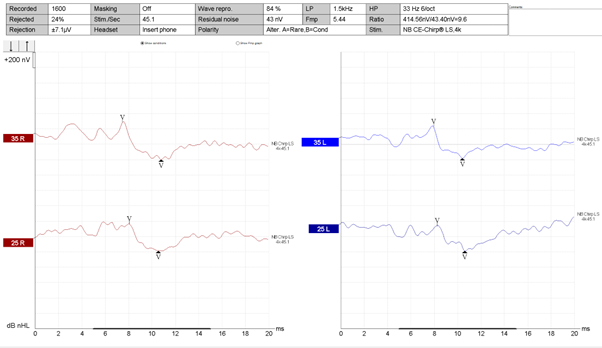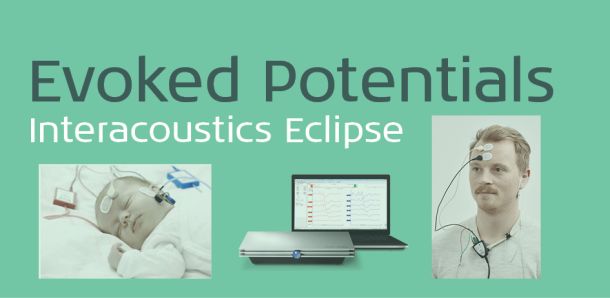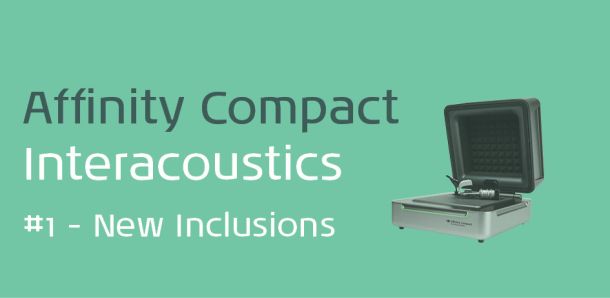Quality Indicators in ABR measurement and When to Stop Testing
In the realm of audiology, assessing hearing function in infants presents unique challenges. Auditory Brainstem Response (ABR) testing is a vital tool in this process, but we often we find ourselves racing against the clock to get results whilst the baby sleeps. Knowing when to conclude testing and how to determine if your waveforms are of good quality is critical for accurate diagnosis and effective intervention. Applying these tools can help maximise the limited time we have. In this article, we'll address some of the recommended stop criteria recommendations and quality indicators for infant ABR testing, providing insights to help clinicians navigate this critical aspect of infant diagnostic assessment.
Understanding Stop Criteria and Quality Indicators:
Stop criteria and Quality Indicators serve to indicate when it's appropriate to conclude ABR testing and/or move on to the next frequency. These criteria are designed to ensure the reliability and validity of the results obtained. Below we will explore some key stop criteria recommendations:
- Residual Noise: Residual noise in the ABR trace should ideally be kept below 15-25 microvolts. Higher residual noise levels can obscure the response (especially at or near threshold) and compromise the accuracy of the results.
- FMP is a statistical online analysis of the ABR recording from beginning to end. The Response Confidence is a statistical measure of a true response being present. Work by Guy Lightfoot out of the UK using the Eclipse 4.6.1, has found that on infants and newborns undergoing follow up, an FMP of 2.2 corresponds to a true response detection of 97.5%. Based on this it is recommended to use an Fmp of 2.25, which corresponds to a confidence level of 97.5%.
It works on the principle of comparing response amplitude to residual noise to provide confidence level or detection rate. The underlying analysis considers the ABR recording typically in a time window of 10 ms. The FMP ratio between the response amplitude and the residual noise is calculated. In a response situation, lower noise or larger response amplitude will drive the FMP up (indicated by the red line and bar). In a no-response situation, the response amplitude will not rise above the residual noise, thus the Fmp value and the Response Confidence will remain low.
Image: FMP and residual noise graph.
- Wave V Amplitude and morphology: Wave V should exhibit clear and robust morphology with an amplitude greater than 0.04 microvolts. A distinct Wave V morphology signifies a robust neural response, indicating adequate auditory pathway function.
- Signal-to-Noise Ratio (SNR) > 3.1: The SNR refers to the ratio of the amplitude of the ABR response to the background noise. A recommended SNR threshold of greater than 3.1 indicates a sufficient signal strength relative to noise, ensuring the reliability of the recorded response. In order to obtain the SNR and amplitude information, wave V peak and trough markers are required (see below).

- Amplitude Change and Latency Shift: Does the amplitude of wave V decrease with decreasing stimulus intensity, accompanied by an increase in latency?
In the case of infant audiology, knowing when to stop ABR testing is crucial for obtaining reliable results and ensuring accurate diagnosis. By adhering to established stop criteria recommendations, clinicians can confidently interpret test findings and provide appropriate intervention strategies for infants with hearing impairment.
You might like to refer to our Summary Chat below and save it for future use.

Want to learn more?
Sign up to our Interacoustics Academy newsletter: Discover our Academy learning environment | Interacoustics
You can read more about the Interacoustics Eclipse and testing ABR on our website: www.interacoustics.com.au.
Latest Articles

ABR Interacoustics Eclipse

ASSR and ABR Comparison on the Eclipse
